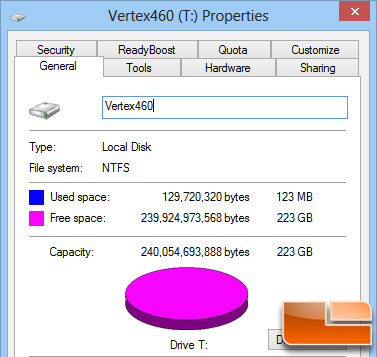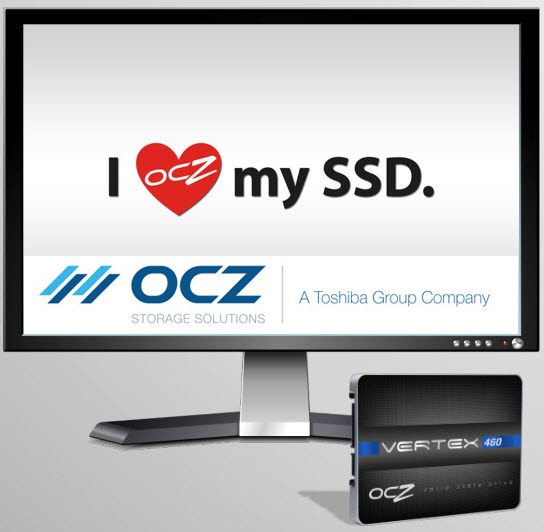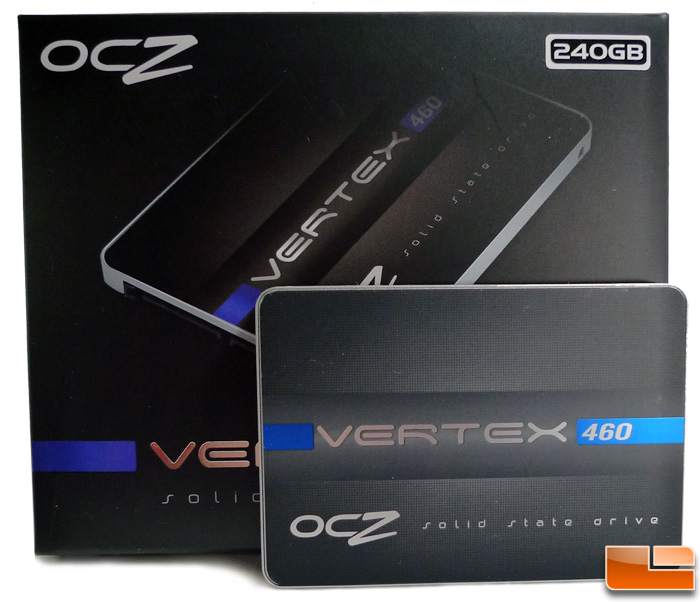OCZ Vertex 460 240GB SSD Review
Final Thoughts & Conclusions
As usual, we take a look at what capacity is left for the user when the drive is ready to go and for the OCZ Vertex 460 drive, we won’t stray from that task. On board, we saw that there are 256GB (1GB byte = 1,000,000,000 bytes) of NAND present and after the units conversion, over-provisioning and Windows have their share, we are left with 223GiB logically (1GiB = 1,073,741,824 bytes). Compared to the Vertex 450, you lose about 15GB more to over-provisioning but it shouldn’t be seen as a negative since the increased spare area will offer longer drive endurance although that hasn’t changed per the specifications of 20GB/day host writes over three years.

We’ll wrap up where we started with OCZ’s recent acquisition by Toshiba which is a nice marriage of SSD manufacturers as OCZ’s Indilinx controllers are some of the best in the industry and Toshiba is one of the few NAND manufacturers and a very competitive one at that. As such, their margins are better and can offer a lower price point. When the Vertex 450 was released in May of 2013, pricing for the 128GB, 256Gb and 512GB drives were $129.99, $234.99 and $499.99 respectively which is right around $1 per usable GB. The Vertex 460 is priced much more competitively at $99.99, $189.99 and $359.99 for the 120GB, 240GB and 480GB drives which ranges from $0.80 to $0.90 per usable GB is which is a significant drop. NAND prices have remained relatively steady as of late so would appear to be due to the influence of Toshiba being the parent company and poses significant competition to the likes of Samsung who offers a similar price and performance. Don’t forget that also included with the drive is the 2.5″ to 3.5″ adapter plate as well as the serial key for a copy of Acronis True Image HD software which both total up to be over $50 in extras.

On the subject of performance, we were duly impressed again with the performance of this Barefoot 3 M10 controlled drive just like we were with the Vertex 450. There are some definite improvements but incremental and nothing that should make current Vertex 450 owners want to trade up. We witnessed sequential read speeds topping out at 552MB/s and writes at 532MB/s which is pretty much the max you’ll get from any SATA III drive. Incompressible data did little to slow it down so steady, even performance is the name of the game which is something OCZ points out specifically with a higher level of sustained performance than that of its peers. It mostly mirrors the performance of the more expensive Vector drive which is quite a compliment although the Vertex carries a lesser warranty and drive endurance rating.

Overall, not a single complaint about this drive – it’s certainly one of the best available at its price point. Time will tell to see how sales go with customers maybe still unsure about OCZ’s future despite their assurances otherwise and the latest announcement. With the finality of the acquisition, the resulting branding reads as OCZ Storage Solutions – A Toshiba Company, so the OCZ name lives on for now. Overall, this should solidify Toshiba/OCZ’s standing in the top tier of the SSD market and make for some interesting competition in 2014. Perhaps even a price war as the many lesser players are lost to attrition and the few strong endure.
Legit Bottom Line: While only an incremental improvement over the Vertex 450, the OCZ Vertex 460 rings in 2014 with some performance enhancements, a more attractive price tag than it’s predecessor, and now a new company name.
